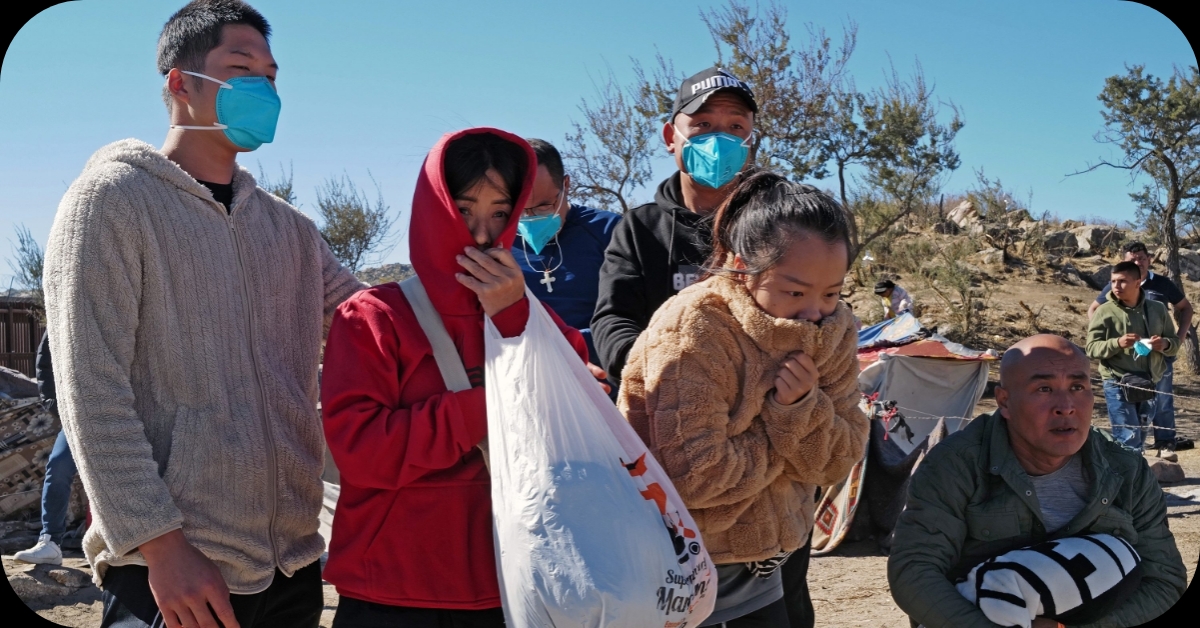Chinese Migrants in the US:Trump says
4 min read
Picsart 24 05 14 19 35 38 534
A Closer Look at the “Army” Allegations
Former President Donald Trump’s recent statements about Chinese migrants in the United States have sparked controversy and raised questions about their intentions. Let’s delve into the claims, the reality, and the impact on the Chinese immigrant community.
The Allegations

- The “Little Army” Remark:
- During a campaign rally, Trump suggested that Chinese migrants were forming a “little army” in the US.
- He alluded to the idea that these migrants, mostly men of military age, might have ulterior motives.
- Amplification in Conservative Media:
- Trump’s remarks have been amplified in conservative media and on social platforms.
- The narrative portrays Chinese immigrants as a coordinated group with potentially sinister intentions.
The Reality: Chinese Asylum Seekers
- Daily Struggles in Flushing:
- In New York City’s Flushing neighborhood, Chinese immigrants face daily struggles.
- They jostle for day jobs, hoping for work on construction sites, farms, or as movers.
- Their reality is far from the coordinated “army” image painted by Trump.
- Individual Stories:
- Wang Gang, a 36-year-old Chinese immigrant, crossed the southern US border illegally seeking better prospects.
- He waits for job opportunities, hoping to improve his financial situation.
- Others share similar stories—individuals seeking work, stability, and a chance at a better life.
The Impact and Concerns
- Harassment and Violence:
- Trump’s rhetoric could encourage harassment and violence toward the Asian community.
- Asian advocacy organizations worry about the consequences of such inflammatory language.
- Ethical Responsibility:
- As leaders and influencers, we have an ethical responsibility to avoid harmful stereotypes.
- Painting an entire group based on ethnicity or immigration status is unjust and perpetuates fear.
Conclusion: A Call for Compassion
The Chinese immigrant community in the US deserves empathy and understanding. Their struggles are real, and their aspirations are individual. Let us move beyond divisive narratives and recognize the humanity in each person seeking a better life.
What are the implications of such rhetoric on immigrant communities?
The implications of rhetoric—especially negative or inflammatory language—on” immigrant communities” are far-reaching and can significantly impact their well-being, social integration, and mental health. Let’s explore these implications in more detail:
- **Stigmatization and Marginalization:
- Rhetoric that portrays immigrants as threats, criminals, or burdens can stigmatize entire communities.
- This marginalization leads to exclusion, discrimination, and reduced access to resources.
- **Psychological Stress and Anxiety:
- Negative rhetoric creates an environment of fear and uncertainty for immigrants.
- Constant exposure to anti-immigrant language contributes to psychological stress, anxiety, and depression.
- **Health Disparities:
- Stress resulting from negative rhetoric affects physical health.
- Immigrants may delay seeking medical care due to fear of discrimination or deportation.
- **Social Cohesion and Trust:
- Divisive rhetoric erodes social cohesion and trust between immigrant and non-immigrant communities.
- This weakens community bonds and hinders collective problem-solving.
- **Policy Impact:
- Rhetoric influences public opinion and shapes immigration policies.
- Anti-immigrant rhetoric can lead to restrictive policies, affecting immigrants’ legal status and rights.
- **Normalization of Discrimination:
- Repetitive negative language normalizes discriminatory attitudes.
- It perpetuates stereotypes and biases against immigrants.
- **Economic Impact:
- Rhetoric affects immigrants’ economic opportunities.
- Discrimination in employment and housing can limit upward mobility.
- **Children and Families:
- Negative rhetoric impacts immigrant children’s sense of belonging and identity.
- Families may face separation due to deportation policies influenced by such language.
- **Community Resilience:
- Positive rhetoric that emphasizes immigrants’ contributions fosters community resilience.
- It promotes social integration and mutual support.
- **Media Responsibility:
- Media portrayal of immigrants shapes public perception.
- Responsible reporting can counter negative rhetoric and promote empathy.
In summary, rhetoric matters. It shapes attitudes, policies, and the well-being of immigrant communities. As a society, we must choose our words carefully and advocate for compassionate, inclusive language.
How can we combat negative rhetoric about immigrants?
Combatting Negative Rhetoric About Immigrants: A Call for Compassion
Immigrants enrich societies, contribute to economies, and strengthen cultural diversity. However, negative rhetoric can perpetuate harmful stereotypes and hinder social cohesion. Here are actionable steps to combat such negativity:
- Education and Awareness:
- Educate the public about immigrants’ positive contributions.
- Share stories of immigrant success, resilience, and cultural enrichment.
- Humanize Immigrants:
- Personalize the immigrant experience.
- Highlight their dreams, struggles, and achievements.
- Media Responsibility:
- Promote balanced narratives in media.
- Challenge stereotypes and misinformation.
- Community Engagement:
- Organize events that foster understanding and dialogue.
- Celebrate cultural festivals and traditions.
- Advocate for Policies:
- Support fair immigration policies.
- Advocate for pathways to citizenship and humane treatment.
- Empathy and Compassion:
- Listen to immigrants’ stories.
- Stand up against discrimination and prejudice.
Remember, compassion and empathy build bridges, while negativity erects walls. Let us choose unity over division and celebrate the shared humanity that binds us all.
Views: 4






